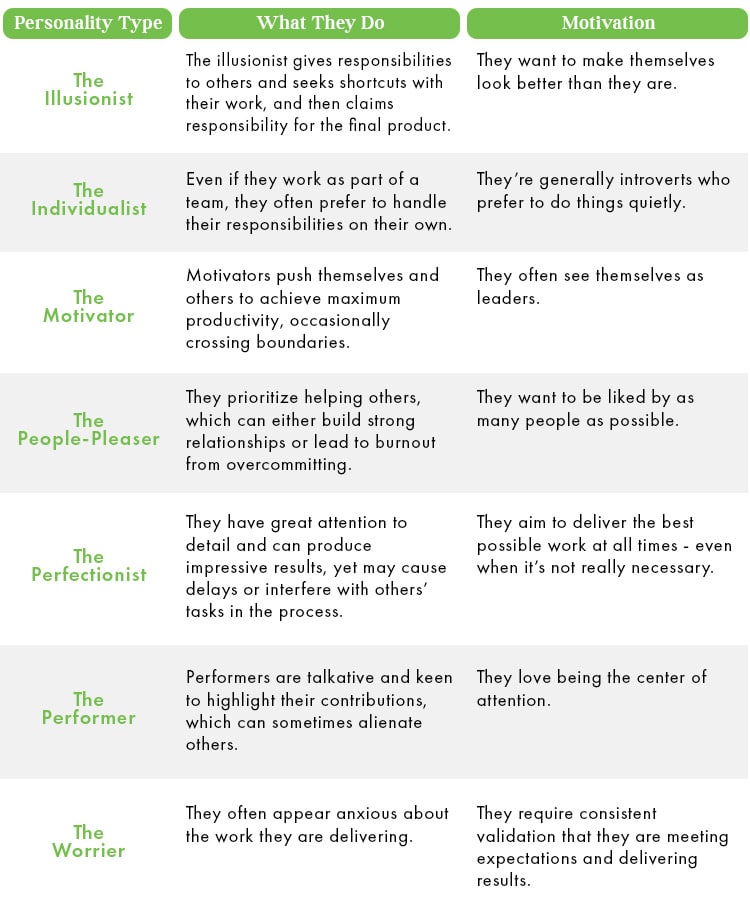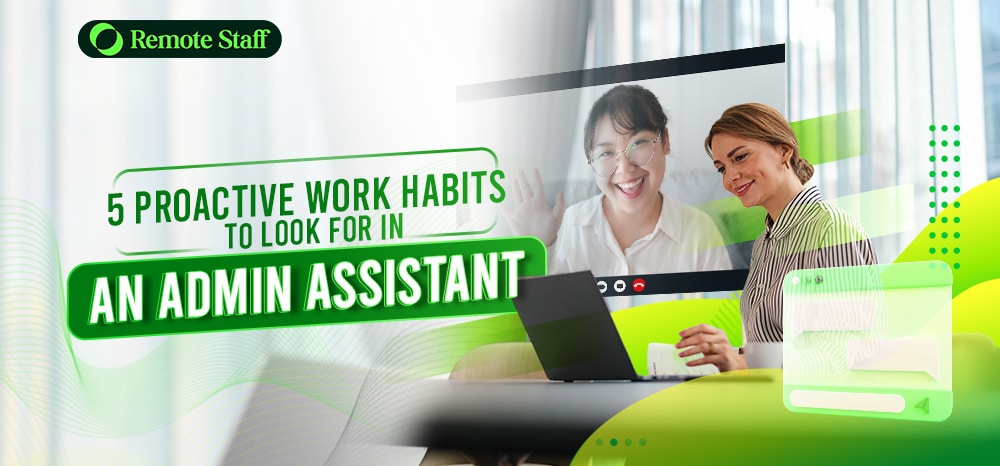Dealing with different kinds of personalities in the workplace can be as challenging as the work itself. Many professionals dread having to collaborate with difficult people, no matter how good they are at what they do.
Most of the time, a toxic person can greatly reduce the entire team’s productivity and effectiveness. Hence, many will opt to find another job instead of facing difficult interactions at work. This adds stress to the remaining team members, resulting in the loss of valuable skills and knowledge.
While maintaining a positive environment can be challenging, it all boils down to understanding the main personality types in the office.
Identifying Key Personality Frameworks
Each individual has unique traits, communication styles, and preferences, which can sometimes lead to misunderstandings, conflicts, and challenges. By understanding these differences, professionals and business owners alike can foster a more productive and harmonious work culture.
Understanding different personality types is crucial for effectively managing diverse personalities in the workplace. They’re key to figuring out how to lead, influence, communicate, and collaborate with these types.
Here are some common workplace personalities, what they do, and why:

Assessing Personality Types
It’s not enough to know about different personality types. It’s equally important to properly categorise and identify which team members or supervisors fall into the right category, so you can place them in roles where they can thrive.
More importantly, the right personality assessments can help all team members understand their preferred communication styles and those of their colleagues. With this newfound understanding, organisations can have clearer and more effective communication within teams, across departments, and towards their clients.
Recognizing and assessing the different work personality types can be done through various methods, including:
- Self-assessments
- Team-building exercises
- Professional personality assessments.
By understanding each person’s preferences, you can adjust how you communicate, collaborate, or resolve conflicts.
Communication Strategies for Diverse Personalities
Effective communication is crucial when dealing with diverse personalities. Hence, you must tailor your communication style to improve understanding, reduce conflicts, and foster more productive interactions.
For example, extroverts may respond better to a more direct and engaging communication style. Conversely, introverted team members may prefer a more thoughtful and reflective approach.
Meanwhile, professionals with task-oriented personalities appreciate data-driven communication and those with people-oriented personalities respond better to relationship-focused ones.
Overcoming Communication Barriers
Many professionals still encounter barriers even with a tailored communication approach.
To maintain a harmonious work environment, it’s crucial to identify and address these, which include:
- Differences in communication styles;
- Misunderstandings due to varying interpretations;
- Conflicts arising from clashing priorities; and
- Difficulties in reaching consensus or compromise.
These barriers are often addressed by open and respectful communication, active listening to different viewpoints, and willingness to find mutually beneficial solutions.
Moreover, by understanding and adapting to the diverse range of personalities, individuals and teams can enhance their collaboration, problem-solving, and overall effectiveness.
Creating an Inclusive Workplace Culture

An inclusive workplace culture is key to an organisation’s success. It allows team members to work together despite different personalities, approaches, styles, perspectives, and experiences. It also helps establish good communication, trust, and empowerment among employees.
Importance of Inclusivity and Diversity
Diverse personalities and perspectives bring numerous benefits to a workplace. They can provide different viewpoints and perspectives, enhancing creativity and problem-solving through varied approaches.
Additionally, inclusive organisations tend to attract and retain top talent. According to studies, diversity, equity, and inclusion are more important today than four years ago. Diversity can even be a competitive advantage whether you’re a startup or a Fortune 500 company.
People are likely to reach their full potential when they work in a place that respects and embraces their differences, which is more likely to lead to valuable work contributions.
Strategies for Inclusivity
Organisations must actively promote inclusivity by implementing practical steps and policies, such as:
1. Identifying Personality Types – Create a cheat sheet for working together where each team member lists their personality type.
They can then share their preferences for feedback and communication so that everyone can better understand each other’s work styles and personalities.
2. Providing Task Structures – Structured tasks with clear deadlines are ideal for introverts since they thrive in environments with clear roadmaps for completing tasks.
On the other hand, extroverts often excel in projects that require collaboration and variety. These tasks can have less rigid timelines, offering room for experimentation.
3. Creating Inclusive Meetings – Compared to their extroverted peers, introverts are less likely to speak up during meetings.
Encourage their participation by asking for written contributions before meetings and using digital tools for anonymous feedback.
4. Personalising Recognition and Space – Extroverts appreciate public recognition while introverts tend to prefer private acknowledgments.
Personalising your approach makes everyone feel appreciated in the way that they will appreciate it best.
Conflict Resolution in a Diverse Team
Successful conflict resolutions require a thoughtful and inclusive approach, prioritising effective communication and sensitivity.
Conflicts are inevitable in a diverse team given the differences in personalities, opinions, and viewpoints. However, these can be prevented by identifying potential issues and employing effective conflict resolution methods.
Identifying Potential Conflicts
Understanding personality types is the first step to identifying (and preventing) potential conflicts.
For instance, team members with strong opinions or preferences might clash if they’re not on the same page. Conversely, introverts may hesitate to speak up. As a result, important insights or concerns may go unaddressed, leading to potential blind spots in decision-making processes.
Some of these common conflicts include:
- Decision-Making Approaches – Diverse personalities have different approaches to decision-making. Some may rely on intuition while others prefer to base theirs on meticulous data analysis.
- Leadership Styles – Different leaders exhibit various leadership styles. This may create conflict within teams or between managers and their subordinates.
- Feedback Preferences – Some leaders prefer to give direct and candid feedback. However, their team members may appreciate a more nuanced and empathetic approach.
- Communication Styles – A direct communicator may clash with someone who prefers diplomatic methods, resulting in misinterpretations and conflicts.
Resolving Conflicts Through Mediation
Fortunately, effective mediation can resolve most workplace conflicts. Most professionals use the following mediation techniques, depending on the different personality types involved:
- Active Listening – Active listening is crucial to conflict resolution. It creates an environment where everyone, introverts and extroverts alike, feel heard and understood.
As a mediator, your goal is to remain impartial and to value each party’s perspective. This helps uncover the root causes of conflicts and clarify any misconceptions. - Open-Ended Questions: Open-ended questions allow parties to explore their feelings and perspectives. They encourage team members to communicate properly and express themselves fully.
These also equip a mediator with more information as the basis for mutually acceptable solutions for both parties. - Non-Judgmental Feedback: A mediator should strive to cultivate a collaborative atmosphere. They need to acknowledge each party’s perspectives -even if they don’t personally agree with them.
Refrain from blaming any party. Instead, seek to understand the factors that contributed to the conflict. It also helps to use neutral language that does not imply bias or favoritism. - Empathy and Understanding: Parties who feel understood and respected are more likely to be receptive to mutually beneficial solutions. They are less likely to harbor resentment or cause the same conflict.
Demonstrating empathy also builds rapport, allowing team members to cooperate and be more open during the mediation process.
Tools and Resources for Personality Management

- Personality Profiling Software: Aside from MBTI and Big Five, you can also use these software tools to better understand each team member’s personality:
- DiSC Assessment – This tool measures personality tests based on dominance, influence, steadiness, and consciousness. It’s used to determine individuals’ communication styles and behavioural tendencies.
- Enneagram – The Enneagram offers insights into one’s strengths and potential areas for growth. It categorises individuals into nine personality types, each with distinct fears, behaviours, and motivations.
- Predictive Index (PI) – This tool focuses on identifying workplace preferences and behaviours. As such, it helps organisations understand how individuals perform and interact in a professional setting.
- Conflict Resolution Tools: Businesses and professionals can utilise the following to guide the mediation process.
- Peer Review Panels – Panel reviews provide a fair and impartial process for addressing grievances among team members, They are usually composed of representatives from different departments within the organisation.
- Mediation Services – An independent and impartial external mediator facilitates discussions between conflicting parties. They can help them reach mutually beneficial solutions while preserving working relationships.
- Employee Assistance Programs (EAPs): Some organisations provide confidential counseling and support services. They offer guidance and resources for both coworkers or supervisors in work-related challenges.
Training and Development
On top of tools and software, workshops, seminars, and courses also help teams learn about their respective personality types. This allows them to enhance their interpersonal skills, self-awareness, and adaptability.
Here are some recommendations:
- Emotional Intelligence Workshops – Seminars and workshops help enhance self-regulation, empathy, and social skills. This helps team members recognise and manage their emotions and understand its impact on interpersonal relationships.
- Communication Skills Training – Training sessions are also effective in improving the team’s assertiveness, nonverbal communication, and active listening. It also highlights the importance of adapting communication styles to different personalities.
- Cross-Cultural Training – Aside from different personality styles, multicultural workplaces can provide cross-cultural training as well. This promotes inclusivity and reduces misunderstandings brought by cultural differences.
FAQ and Conclusion
Learn how to deal with different personalities with these FAQs:
- How do I handle a colleague who tends to monopolise the conversation?
Try redirecting the conversation back to the agenda. If you’re the head, you can set clear meeting guidelines and time limits for contributions. If these don’t work, approach your colleague privately to discuss their communication style and suggest alternatives. - How can I work effectively with a highly introverted teammate?
Introverts often prefer to work alone and they appreciate teammates who respect their need for autonomy and solitude. Should you wish to communicate with them, try writing via email or chats first.
You can also find opportunities for collaboration that caters to their preferred working style such as assigning independent tasks with clear deadlines. - How do I deal with a supervisor who is overly demanding?
It helps to document your accomplishments to demonstrate your value and contribution. You can also seek clarification on expectations and priorities to understand where they are coming from.
If these still don’t work, consider discussing your concerns with HR or seek support from a mentor. - What should I do if I find it challenging to connect with coworkers whose personalities are different from mine?
Start by looking for common interests or shared goals to build rapport. You must also be open-minded and willing to learn from their perspectives. That way, you can understand their motivations and communication preferences.
- What strategies can I use to navigate conflicts with team members who have different communication styles?
Practice empathy and active listening to understand their perspective. It’s best to express your feelings without placing blame on anyone.
Moreover, try to seek common ground and work together to find mutually beneficial solutions. You can also consider involving a mediator in case the conflict still persists.
Conclusion

Dealing with different personalities in the workplace is both an art and a science. It requires a combination of empathy, techniques, and tools. By understanding each individual’s motivations, perspectives, and backgrounds, organisations can enjoy harmony and productivity.
At the end of the day, embracing diversity and adapting to different personalities is key to business and professional success.
- Want AI prompts to help you further manage your teams? Check out these 100 AI prompts.
- How about a list of 2024’s top business apps to keep your team compliant and on-track? Check it out here.
- Ready to hire world-class, high-performing virtual staff at 40% to 60% cost savings and lifetime support? Click here.
- Check out our 1,000 fully vetted and highly talented staff here.
Syrine is studying law while working as a content writer. When she’s not writing or studying, she engages in tutoring, events planning, and social media browsing. In 2021, she published her book, Stellar Thoughts.




















